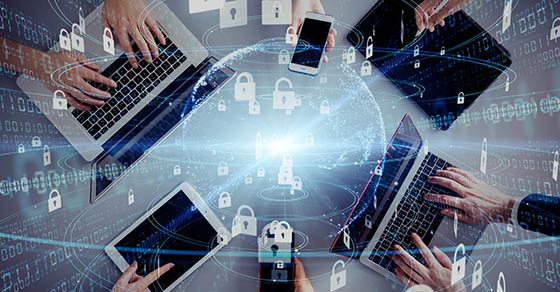
Cybersecurity in an Internet of Things (IoT) World
According to Statista, an estimated 22 billion IoT devices were in use worldwide in 2020, projected to increase to 31 billion by 2025. With IoT devices growing in number, IoT cyberattacks are also on the rise.
What does the IoT include?
- Smart thermostats, appliances, and lighting
- Smart speakers like Google Home and Amazon Alexa
- Fitness bands and smartwatches
People living in large urban environments are surrounded by thousands of trackable objects every moment.
The IoT is growing faster than our ability to secure it.
The increasing number of IoT devices being connected to the internet has led to significant cybersecurity concerns, including:
- Inadequate security controls: Many IoT devices are not designed with security in mind and may lack basic security controls such as encryption, secure passwords, and regular software updates.
- Data privacy: IoT devices collect a vast amount of data, including personal and sensitive information. If this data is not adequately secured, hackers can intercept or steal it.
- Lack of visibility and control: IoT devices may be deployed in remote or uncontrolled environments, making it difficult for organizations to monitor and manage them.
As more employees work remotely using IoT devices, companies must ensure that their networks and data remain secure. Here are some actions that companies can take to improve cybersecurity for remote and in-office workers in the IoT world:
- Develop a comprehensive cybersecurity policy: Companies should develop a cybersecurity policy that covers remote work and IoT devices. This policy should include guidelines for securing IoT devices, using secure networks, and accessing company data from remote locations.
- Use secure networks: Employees should be required to connect to company networks using Virtual Private Networks (VPNs) or other secure methods. This can help to prevent unauthorized access and data breaches.
- Turn off IoT devices during meetings: These devices constantly collect data; you never know who may be listening or when. Keep your clients’ and organizations’ information safe by encouraging employees to turn off their devices during meetings and calls.
- Provide cybersecurity training: Companies should regularly train employees on best practices for cybersecurity, including how to identify and respond to cyber threats.
With the increasing prevalence of smart devices, taking proactive steps to protect your organization and employees is crucial. If you have any questions or concerns about cybersecurity, please do not hesitate to contact us. Our team of professionals is here to help you safeguard your data and stay safe online.
Information used in this article was provided by our partners at KnowBe4.